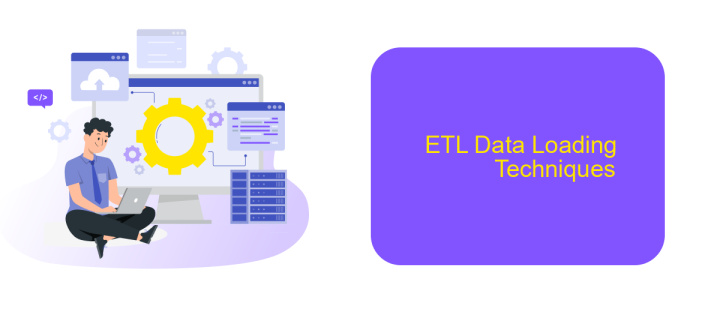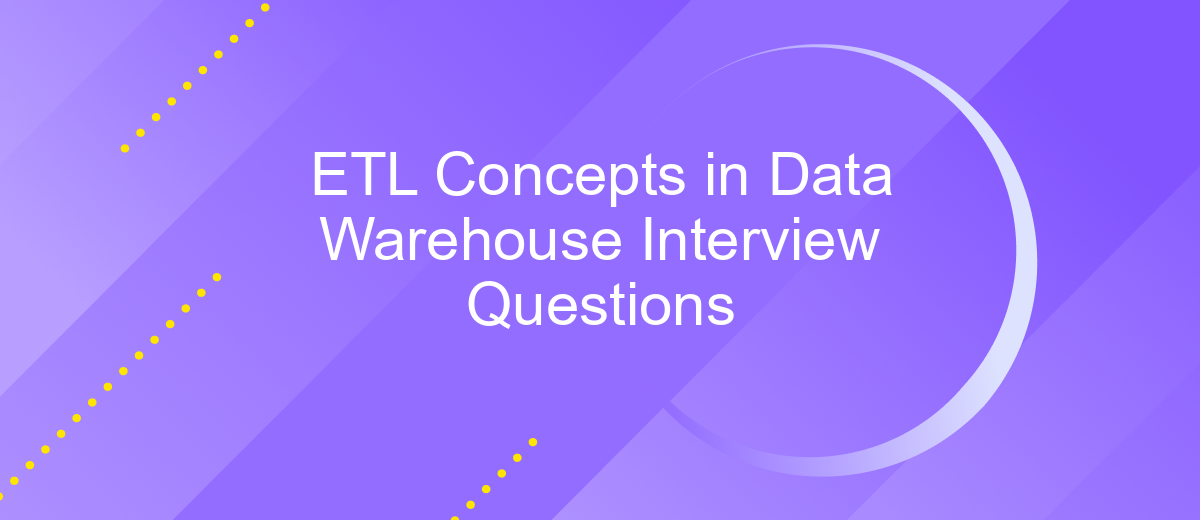ETL Concepts in Data Warehouse Interview Questions
In the realm of data warehousing, ETL (Extract, Transform, Load) processes are fundamental for transforming raw data into meaningful insights. Understanding ETL concepts is crucial for anyone aspiring to excel in data management roles. This article delves into key ETL concepts and presents common interview questions to help you prepare for a data warehouse interview.
ETL Overview and Basic Concepts
ETL, which stands for Extract, Transform, Load, is a fundamental process in data warehousing. It involves extracting data from various sources, transforming it to fit operational needs, and loading it into a destination data warehouse. This process ensures that data is consolidated, cleansed, and organized for analysis and reporting.
- Extract: This step involves retrieving raw data from different sources such as databases, APIs, and flat files.
- Transform: In this stage, the extracted data is cleansed, formatted, and transformed to meet the requirements of the target database.
- Load: Finally, the transformed data is loaded into the data warehouse for further analysis and reporting.
Effective ETL processes are crucial for maintaining data integrity and consistency. Tools like ApiX-Drive can simplify the integration and automation of ETL workflows by connecting various data sources and automating data transfers. This ensures that businesses can efficiently manage their data pipelines without extensive manual intervention.
ETL Data Extraction Techniques

Data extraction is the first step in the ETL process, which involves retrieving data from various source systems and making it available for further processing. There are several techniques for data extraction, including full extraction, incremental extraction, and real-time extraction. Full extraction involves pulling all the data from the source system, which can be resource-intensive but ensures that the entire dataset is captured. Incremental extraction, on the other hand, only extracts data that has changed since the last extraction, making it more efficient and less disruptive. Real-time extraction continuously pulls data as it changes, providing the most up-to-date information.
When setting up data extraction, it's important to consider the tools and services that can facilitate the process. ApiX-Drive is a powerful integration service that simplifies the setup of data extraction workflows. It supports a wide range of data sources and provides a user-friendly interface to configure and automate the extraction process. With ApiX-Drive, businesses can easily manage their data extraction needs, ensuring that their data warehouse is always populated with the latest and most relevant data.
ETL Data Transformation Techniques

Data transformation is a crucial step in the ETL process, ensuring that raw data is converted into a usable format for analysis and reporting. This step involves several techniques that help in cleaning, structuring, and enhancing data to meet business requirements.
- Data Cleansing: This technique involves identifying and rectifying errors and inconsistencies in the data to improve its quality.
- Data Aggregation: Combining multiple pieces of data to produce a summary or aggregate result, which is useful for reporting and analysis.
- Data Filtering: Selecting specific records from a dataset based on predefined criteria to focus on relevant information.
- Data Enrichment: Enhancing data by adding additional information from external sources to provide more context and value.
- Data Normalization: Organizing data to reduce redundancy and improve data integrity by ensuring it conforms to a standard format.
Implementing these transformation techniques can be streamlined using integration services like ApiX-Drive, which automates data workflows and ensures seamless data transfer between different systems. By leveraging such tools, organizations can enhance their ETL processes, leading to more accurate and insightful data analysis.
ETL Data Loading Techniques

ETL (Extract, Transform, Load) data loading techniques are crucial for efficiently managing data in a data warehouse. These techniques ensure that data is accurately and effectively transferred from various sources to the data warehouse, maintaining data integrity and consistency.
There are several common data loading techniques used in ETL processes, each suited to different scenarios and requirements. Choosing the right technique depends on factors such as data volume, frequency of updates, and the specific needs of the data warehouse.
- Full Load: This technique involves loading the entire dataset from the source into the data warehouse. It is often used for initial data loading or when a complete refresh is necessary.
- Incremental Load: Only the data that has changed since the last load is extracted and loaded into the data warehouse. This method is efficient for ongoing updates and reduces processing time.
- Batch Processing: Data is collected and processed in batches at scheduled intervals. This technique is suitable for handling large volumes of data without overwhelming system resources.
- Real-Time Processing: Data is loaded into the data warehouse as soon as it is generated or updated. This method is ideal for applications requiring up-to-the-minute data availability.
Tools like ApiX-Drive can facilitate these ETL processes by automating data integration from various sources, ensuring seamless and efficient data loading. By leveraging such tools, organizations can streamline their ETL workflows and maintain high data quality.


ETL Design and Best Practices
Designing an efficient ETL process is crucial for the success of any data warehouse project. Start by ensuring data quality through validation checks at each stage of the ETL process. This includes cleansing, transforming, and loading data with minimal latency. It's essential to implement robust error handling and logging mechanisms to track and resolve issues promptly. Moreover, consider the scalability of your ETL architecture to handle increasing data volumes and complexity over time.
Adopting best practices in ETL design also involves leveraging automation tools to streamline the integration process. For instance, services like ApiX-Drive can simplify data integration across various platforms, reducing manual effort and the risk of human error. Additionally, ensure that your ETL process is modular and maintainable, allowing for easy updates and modifications. Regularly monitor and optimize performance to ensure that data is processed efficiently and meets business requirements.
FAQ
What is ETL in the context of data warehousing?
Why is ETL important for data warehousing?
What are the main challenges in the ETL process?
How can automation improve the ETL process?
What are the key components of an ETL tool?
Strive to take your business to the next level, achieve your goals faster and more efficiently? Apix-Drive is your reliable assistant for these tasks. An online service and application connector will help you automate key business processes and get rid of the routine. You and your employees will free up time for important core tasks. Try Apix-Drive features for free to see the effectiveness of the online connector for yourself.

